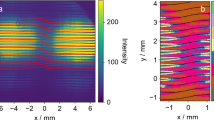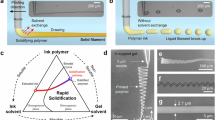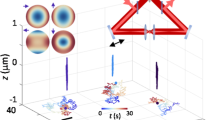Abstract
I HAVE read with considerable interest Dr. Houstoun's letter on Young's experiment in NATURE of April 28, p. 268, and I beg to state that we have been using the spectrometer for some time in the University College of Science, Calcutta. For making the double slit, a rectangular slit, about 2 cm. × 2 mm., is cut in a piece of cardboard. Two Gillette razor-blades are placed on two sides of this slit by small pieces of wax. At the centre a fine cocoon fibre, or preferably a spider thread, forms a double slit. By mounting the cardboard on the prism-table the fringes are easily seen, and as the rotation of the table alters the width of the slit the change in the nature of the fringes can be easily examined.
This is a preview of subscription content, access via your institution
Access options
Subscribe to this journal
Receive 51 print issues and online access
$199.00 per year
only $3.90 per issue
Buy this article
- Purchase on SpringerLink
- Instant access to full article PDF
Prices may be subject to local taxes which are calculated during checkout
Similar content being viewed by others
Author information
Authors and Affiliations
Rights and permissions
About this article
Cite this article
GHOSH, P. Young's Interference Experiment. Nature 107, 362 (1921). https://doi.org/10.1038/107362d0
Issue date:
DOI: https://doi.org/10.1038/107362d0



